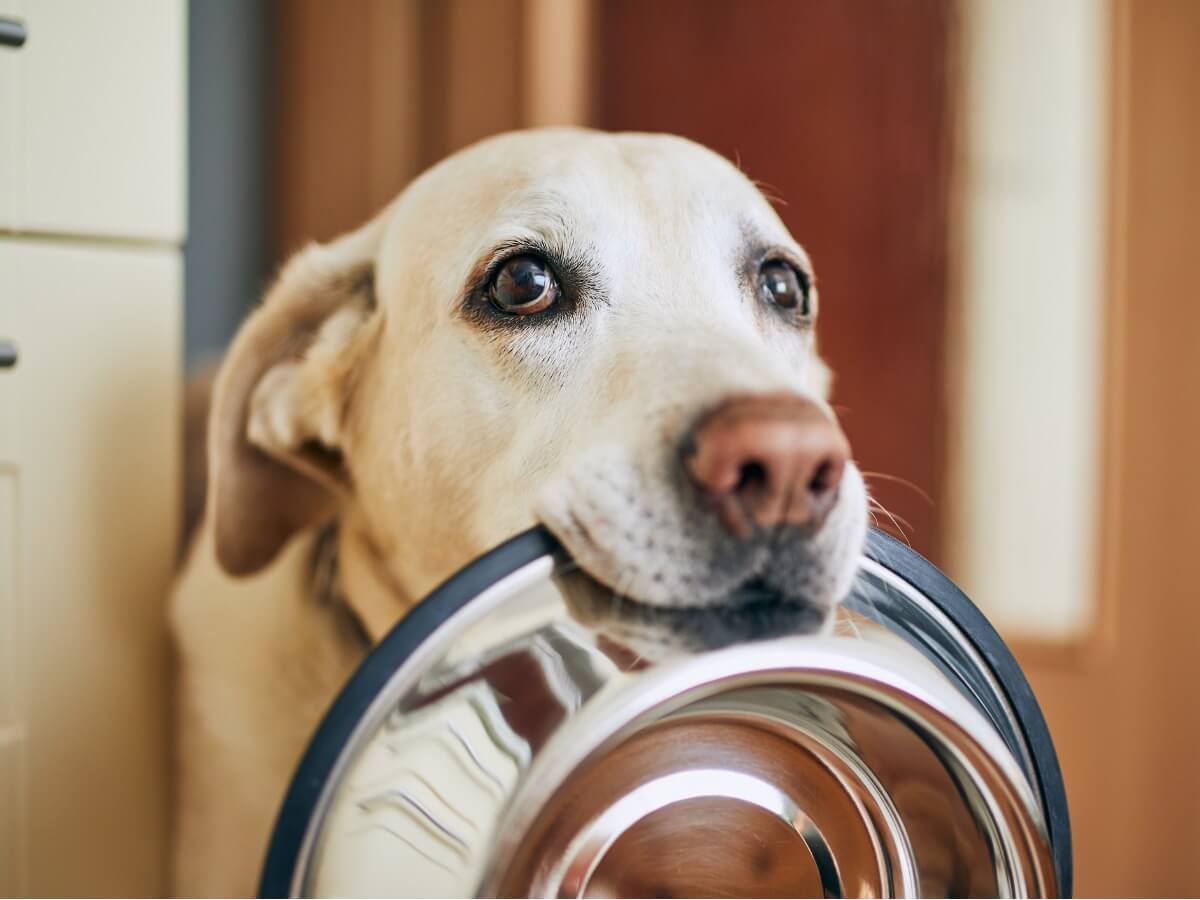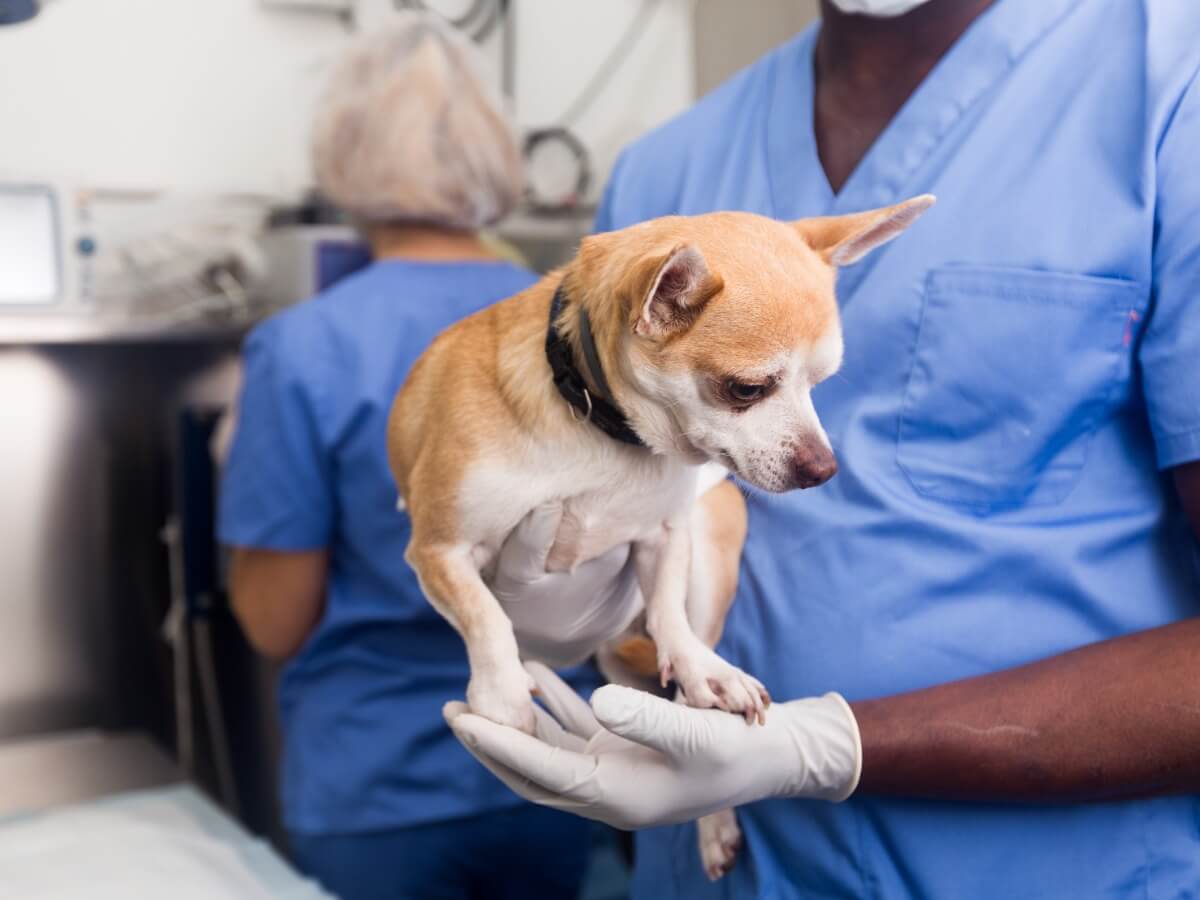12 Questions and Answers About Dog Care


Written and verified by the biologist Samuel Sanchez
According to the Statista data portal, there are about 471 million dogs living in all households in the world. Thanks to the almost 340 recognized breeds, these animals come into the world with unique shapes, physical characteristics and personalities, but they all belong to the same species. Therefore, we need to ask and answer some questions about dog care! Keep reading!
In this opportunity, we want to solve some of the issues that tend to cause the most concern among dog owners. From your pet’s daily exercise to their dietary needs, we leave no nook and cranny unanswered! Don’t miss the 12 basic dog care questions and answers.
1. Dog care: How long should my dog go out for every day?
This is one of the most controversial issues in the world of dogs. Sometimes our lives don’t allow us to breathe and dogs suffer this stress with us, but this doesn’t mean that their physiological needs shouldn’t be left unattended. In general, a dog requires 30 minutes to 2 hours of daily exercise, divided into 3 or 4 walks each day.
As you can imagine, it isn’t the same to take care of a husky as a pug. The physical constitution between races varies greatly, as does their energy and general disposition to go out. If you have questions about your particular dog, then don’t hesitate to ask your veterinarian.
2. How much should my dog eat every day?
A dog requires a set amount of energy to maintain its physical functions, a concept exemplified in the resting energy requirement (RER). If the energy burned by exercise and walking is added to this figure, the maintenance energy requirement (MER) is obtained.
The amount of food and kilocalories that a dog should receive per day depends dramatically on its weight, age, sex, breed, and individual condition. However, the following formulas are usually helpful as general guides:
- MER in dogs under 15 kilograms (33 pounds): animal weight (in kilos) x 60 + 80.
- MER in dogs between 15 and 40 kilograms (33 – 88 pounds): weight in kilos x 40 + 380.
- Finally, the MER in dogs over 40 kilograms (88 pounds): weight in kilos x 35 + 580.
With these formulas, we can estimate that a dog weighing 10 kilos (22 pounds) needs about 680 kilocalories per day, while another weighing 50 kilos (110 pounds) will require about 2300 in total. As you can see, the caloric intake depends mainly on the weight of the dog.

3. When should I sterilize my dog?
According to the American Animal Hospital Association (AAHA), a small dog should be spayed before its first heat, around 5-6 months of age. On the other hand, with large dogs, you have to wait a little longer, at least until they finish their growth (at 9-15 months).
Spaying and spaying dramatically reduces the risk of breast cancer, a condition that’s fatal in 50% of female dogs.
4. Does my dog want to be “the leader of the pack”?
Dominance theories in the canine world have been contested time and again, as they’re not supported by any scientific basis. The packs of those ancestors of the dogs – the wolves – (Canis lupus), aren’t even particularly structured, as the dominant units are more “parents” than “bosses”.
For all these reasons, strategies such as “always walk in front of your dog”, and “exert your dominance” and other issues are increasingly being questioned. The most appropriate thing is to always train the dog through positive reinforcement and not try to be above them, and much less by applying force.
5. How many years does a dog live?
One of the most common questions about dogs is their estimated longevity. In general, a dog lives from 10 to 13 years on average, although there are many differences here. A chihuahua lives 15 years, while the bulldog barely reaches 7 years of age.
Brachycephaly, congenital diseases of the breed, and selective crossbreeding over generations are often causes of decreased longevity in dogs.
6. How much does it cost to have a dog per year?
Experts estimate that, each year, an owner must spend between 700 and 1500 euros on basic dog care (about 830-1770 dollars). This equates to about 60-125 euros (about 70 – 150 dollars per month, just for food, hygiene, toys and veterinary check-ups. If the animal has an illness disease or requires surgical intervention, the figure increases considerably.
It may seem like an unnecessary nuance at this point, but monetary stability is essential when thinking about getting a dog. As indicated in the study He would never do it, published by the Affinity Foundation, more than 6% of dogs are abandoned for financial reasons. If you aren’t sure that you can keep an animal long-term, then don’t adopt one!
7. How often should I take my dog to the vet?
Visits to the vet during the first year of the dog’s life are frequent, as there are many vaccinations, sterilization, and much more. Apart from these procedures, each puppy must visit a vet at least twice a year to monitor its general health.
Once it reaches adulthood, the dog requires a general check-up every year. In any case, if you see any atypical clinical signs in your pet, don’t hesitate to go to the vet even if it’s not time for its routine evaluation. With pet health, prevention is always better than cure.

8. Why does my dog lick constantly?
Studies have shown that vertebrate saliva contains enzymes and antibacterial compounds. Specifically, the saliva of dogs is effective against the pathogens Escherichia coli and Streptococcus canis, bacteria that can complicate clinical symptoms after an injury or blow.
If you wonder why dogs lick each other insistently sometimes, the answer is likely to lie in an open wound, a parasite, or an inflamed region. In other words, excessive licking often arises as a physiological response to illness or discomfort.
9. Why does my dog vomit?
Vomiting in dogs is quite normal, as their curiosity sometimes leads them to ingest things that are inedible or difficult to digest. If it doesn’t last more than 24 hours and the animal seems to be well in every other aspect, then there’s nothing to worry about.
In any case, if your dog vomits a lot and the fluid is yellowish or blackish (gastric acids and blood), it’s most likely that your animal has a gastrointestinal condition that requires immediate attention. Above all, the presence of blood in the stools and other waste is a sign that should concern you greatly.
10. Could my dog have cancer?
Unfortunately, the answers to some of the questions about dog health are very unpleasant. The American Veterinary Medical Association (AVMA) indicates that up to 1 in 4 dogs will develop cancer in their lifetime and that the risk increases to 50% after 10 years of age.
In any case, some breeds are more prone than others to suffer this disease, as is the case of Golden Retrievers. To minimize the risk of malignancy in your pet, be sure to provide the proper diet, don’t smoke indoors, and sterilize it as soon as possible.
11. Could my dog have an allergy?
As with humans, dogs can show hypersensitivity reactions to seemingly innocuous elements of the environment, known as allergens. The immune system sees the allergen as a threat and acts accordingly, promoting inflammatory mechanisms and other allergic processes.
The most common signs of allergy in dogs are reddened areas of the body, constant scratching and licking, red eyes, sneezing, a runny nose, coughing, and much more. Again, a visit to the veterinarian is essential with these symptoms.
12. How many abandoned dogs are there?
As we’ve already said, not all questions about dogs care have pleasant answers. To highlight this, there are an estimated 200 million abandoned dogs around the world. In Spain alone, more than 183,000 dogs are collected each year by protectors and not all of them end up being adopted.
The most common causes of canine abandonment are the appearance of unwanted litters (21%), behavioral problems in the animal (13.2%), the end of the hunting season (11.6%), the loss of interest (10.8%) and economic reasons (6.4%). Despite being a crime, this heinous act continues to be committed around the world.

A beautiful responsibility
In these lines, we’ve shown you 12 questions and answers about dog care, including their needs, behavior and general illnesses. With all this information, you’ll surely have a general idea about caring for your dog. However, you mustn’t forget that adopting one is a commitment of at least 10 years and an enormous daily responsibility.
If you want to adopt a dog, look carefully at all these questions, and any others, and talk to a vet about them. If you’re willing to give part of your life to your pet, they’ll certainly make you happy as they devote their life to you.
According to the Statista data portal, there are about 471 million dogs living in all households in the world. Thanks to the almost 340 recognized breeds, these animals come into the world with unique shapes, physical characteristics and personalities, but they all belong to the same species. Therefore, we need to ask and answer some questions about dog care! Keep reading!
In this opportunity, we want to solve some of the issues that tend to cause the most concern among dog owners. From your pet’s daily exercise to their dietary needs, we leave no nook and cranny unanswered! Don’t miss the 12 basic dog care questions and answers.
1. Dog care: How long should my dog go out for every day?
This is one of the most controversial issues in the world of dogs. Sometimes our lives don’t allow us to breathe and dogs suffer this stress with us, but this doesn’t mean that their physiological needs shouldn’t be left unattended. In general, a dog requires 30 minutes to 2 hours of daily exercise, divided into 3 or 4 walks each day.
As you can imagine, it isn’t the same to take care of a husky as a pug. The physical constitution between races varies greatly, as does their energy and general disposition to go out. If you have questions about your particular dog, then don’t hesitate to ask your veterinarian.
2. How much should my dog eat every day?
A dog requires a set amount of energy to maintain its physical functions, a concept exemplified in the resting energy requirement (RER). If the energy burned by exercise and walking is added to this figure, the maintenance energy requirement (MER) is obtained.
The amount of food and kilocalories that a dog should receive per day depends dramatically on its weight, age, sex, breed, and individual condition. However, the following formulas are usually helpful as general guides:
- MER in dogs under 15 kilograms (33 pounds): animal weight (in kilos) x 60 + 80.
- MER in dogs between 15 and 40 kilograms (33 – 88 pounds): weight in kilos x 40 + 380.
- Finally, the MER in dogs over 40 kilograms (88 pounds): weight in kilos x 35 + 580.
With these formulas, we can estimate that a dog weighing 10 kilos (22 pounds) needs about 680 kilocalories per day, while another weighing 50 kilos (110 pounds) will require about 2300 in total. As you can see, the caloric intake depends mainly on the weight of the dog.

3. When should I sterilize my dog?
According to the American Animal Hospital Association (AAHA), a small dog should be spayed before its first heat, around 5-6 months of age. On the other hand, with large dogs, you have to wait a little longer, at least until they finish their growth (at 9-15 months).
Spaying and spaying dramatically reduces the risk of breast cancer, a condition that’s fatal in 50% of female dogs.
4. Does my dog want to be “the leader of the pack”?
Dominance theories in the canine world have been contested time and again, as they’re not supported by any scientific basis. The packs of those ancestors of the dogs – the wolves – (Canis lupus), aren’t even particularly structured, as the dominant units are more “parents” than “bosses”.
For all these reasons, strategies such as “always walk in front of your dog”, and “exert your dominance” and other issues are increasingly being questioned. The most appropriate thing is to always train the dog through positive reinforcement and not try to be above them, and much less by applying force.
5. How many years does a dog live?
One of the most common questions about dogs is their estimated longevity. In general, a dog lives from 10 to 13 years on average, although there are many differences here. A chihuahua lives 15 years, while the bulldog barely reaches 7 years of age.
Brachycephaly, congenital diseases of the breed, and selective crossbreeding over generations are often causes of decreased longevity in dogs.
6. How much does it cost to have a dog per year?
Experts estimate that, each year, an owner must spend between 700 and 1500 euros on basic dog care (about 830-1770 dollars). This equates to about 60-125 euros (about 70 – 150 dollars per month, just for food, hygiene, toys and veterinary check-ups. If the animal has an illness disease or requires surgical intervention, the figure increases considerably.
It may seem like an unnecessary nuance at this point, but monetary stability is essential when thinking about getting a dog. As indicated in the study He would never do it, published by the Affinity Foundation, more than 6% of dogs are abandoned for financial reasons. If you aren’t sure that you can keep an animal long-term, then don’t adopt one!
7. How often should I take my dog to the vet?
Visits to the vet during the first year of the dog’s life are frequent, as there are many vaccinations, sterilization, and much more. Apart from these procedures, each puppy must visit a vet at least twice a year to monitor its general health.
Once it reaches adulthood, the dog requires a general check-up every year. In any case, if you see any atypical clinical signs in your pet, don’t hesitate to go to the vet even if it’s not time for its routine evaluation. With pet health, prevention is always better than cure.

8. Why does my dog lick constantly?
Studies have shown that vertebrate saliva contains enzymes and antibacterial compounds. Specifically, the saliva of dogs is effective against the pathogens Escherichia coli and Streptococcus canis, bacteria that can complicate clinical symptoms after an injury or blow.
If you wonder why dogs lick each other insistently sometimes, the answer is likely to lie in an open wound, a parasite, or an inflamed region. In other words, excessive licking often arises as a physiological response to illness or discomfort.
9. Why does my dog vomit?
Vomiting in dogs is quite normal, as their curiosity sometimes leads them to ingest things that are inedible or difficult to digest. If it doesn’t last more than 24 hours and the animal seems to be well in every other aspect, then there’s nothing to worry about.
In any case, if your dog vomits a lot and the fluid is yellowish or blackish (gastric acids and blood), it’s most likely that your animal has a gastrointestinal condition that requires immediate attention. Above all, the presence of blood in the stools and other waste is a sign that should concern you greatly.
10. Could my dog have cancer?
Unfortunately, the answers to some of the questions about dog health are very unpleasant. The American Veterinary Medical Association (AVMA) indicates that up to 1 in 4 dogs will develop cancer in their lifetime and that the risk increases to 50% after 10 years of age.
In any case, some breeds are more prone than others to suffer this disease, as is the case of Golden Retrievers. To minimize the risk of malignancy in your pet, be sure to provide the proper diet, don’t smoke indoors, and sterilize it as soon as possible.
11. Could my dog have an allergy?
As with humans, dogs can show hypersensitivity reactions to seemingly innocuous elements of the environment, known as allergens. The immune system sees the allergen as a threat and acts accordingly, promoting inflammatory mechanisms and other allergic processes.
The most common signs of allergy in dogs are reddened areas of the body, constant scratching and licking, red eyes, sneezing, a runny nose, coughing, and much more. Again, a visit to the veterinarian is essential with these symptoms.
12. How many abandoned dogs are there?
As we’ve already said, not all questions about dogs care have pleasant answers. To highlight this, there are an estimated 200 million abandoned dogs around the world. In Spain alone, more than 183,000 dogs are collected each year by protectors and not all of them end up being adopted.
The most common causes of canine abandonment are the appearance of unwanted litters (21%), behavioral problems in the animal (13.2%), the end of the hunting season (11.6%), the loss of interest (10.8%) and economic reasons (6.4%). Despite being a crime, this heinous act continues to be committed around the world.

A beautiful responsibility
In these lines, we’ve shown you 12 questions and answers about dog care, including their needs, behavior and general illnesses. With all this information, you’ll surely have a general idea about caring for your dog. However, you mustn’t forget that adopting one is a commitment of at least 10 years and an enormous daily responsibility.
If you want to adopt a dog, look carefully at all these questions, and any others, and talk to a vet about them. If you’re willing to give part of your life to your pet, they’ll certainly make you happy as they devote their life to you.
All cited sources were thoroughly reviewed by our team to ensure their quality, reliability, currency, and validity. The bibliography of this article was considered reliable and of academic or scientific accuracy.
- Number of dogs and cats kept worldwide in 2018, statista. Recogido a 13 de julio en https://www.statista.com/statistics/1044386/dog-and-cat-pet-population-worldwide/
- ¿When should I spay or neuter my pet? AAHA. Recogido a 13 de julio en https://www.aaha.org/your-pet/pet-owner-education/ask-aaha/spay-or-neuter/#:~:text=Dogs%3A%20According%20to%20the%20AAHA,(five%20to%20six%20months).
- Él nunca lo haría, Fundación Affinity. Recogido a 13 de julio en https://www.portalveterinaria.com/upload/20201119083544InformeFA_%C3%89lNuncaloHar%C3%ADa2020.pdf
- Hart BL, Powell KL (September 1990). “Antibacterial properties of saliva: role in maternal periparturient grooming and in licking wounds”. Physiol. Behav. 48 (3): 383–6.
- Cancer in pets, AVMA. Recogido a 13 de julio en https://www.avma.org/resources/pet-owners/petcare/cancer-pets
This text is provided for informational purposes only and does not replace consultation with a professional. If in doubt, consult your specialist.








